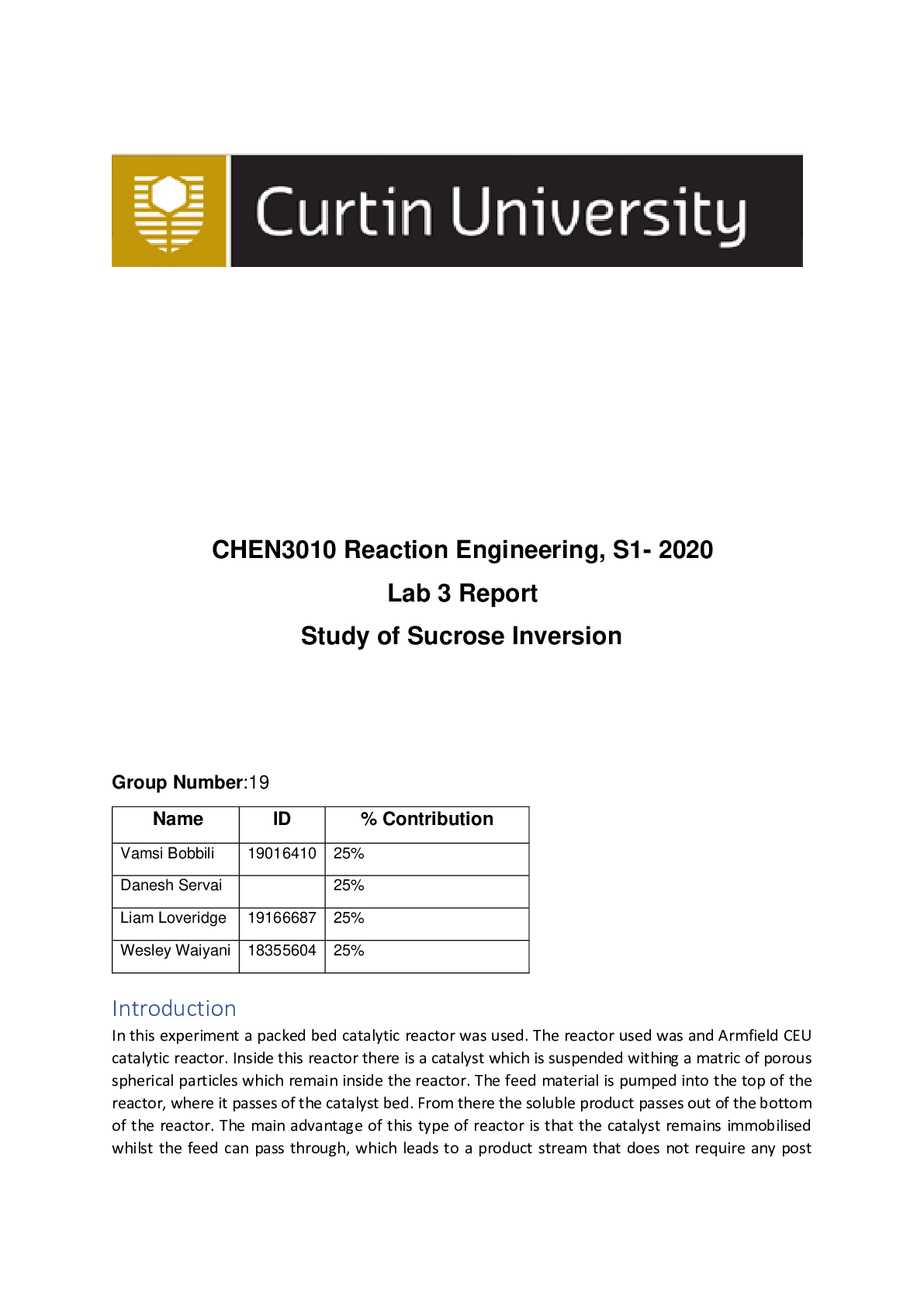
SOPHIA-INTRO TO ETHICS – PHIL 200 UNIT 2 (GRADED A)
Engineering > Lab Report > CHEN3010 Reaction Engineering, S1- 2020 Lab 3 Report Study of Sucrose Inversion (All)
Introduction In this experiment a packed bed catalytic reactor was used. The reactor used was and Armfield CEU catalytic reactor. Inside this reactor there is a catalyst which is suspended withing a ... matric of porous spherical particles which remain inside the reactor. The feed material is pumped into the top of the reactor, where it passes of the catalyst bed. From there the soluble product passes out of the bottom of the reactor. The main advantage of this type of reactor is that the catalyst remains immobilised whilst the feed can pass through, which leads to a product stream that does not require any postprocessing or filtration. This means that an expensive catalyst may be used repeatedly without any loss to the product. Aim The aim of this laboratory was to study the sucrose inversion reaction inside of a catalytic reactor, and to demonstrate the principles of packed bed catalysts. There were two types of catalyst used, form which conversion and effectiveness of each were reported. Theory The reaction used in this laboratory is the sucrose inversion reaction. This reaction is a hydrolysis reaction which reacts with an acid catalyst to product both glucose and fructose: [Show More]
Last updated: 3 years ago
Preview 1 out of 23 pages

Buy this document to get the full access instantly
Instant Download Access after purchase
Buy NowInstant download
We Accept:

.png)
CHEN 3010 – Reaction Engineering Lab Report
By Muchiri 4 years ago
$18
2
Can't find what you want? Try our AI powered Search
Connected school, study & course
About the document
Uploaded On
May 17, 2021
Number of pages
23
Written in
All
This document has been written for:
Uploaded
May 17, 2021
Downloads
0
Views
165
Scholarfriends.com Online Platform by Browsegrades Inc. 651N South Broad St, Middletown DE. United States.
We're available through e-mail, Twitter, Facebook, and live chat.
FAQ
Questions? Leave a message!
Copyright © Scholarfriends · High quality services·